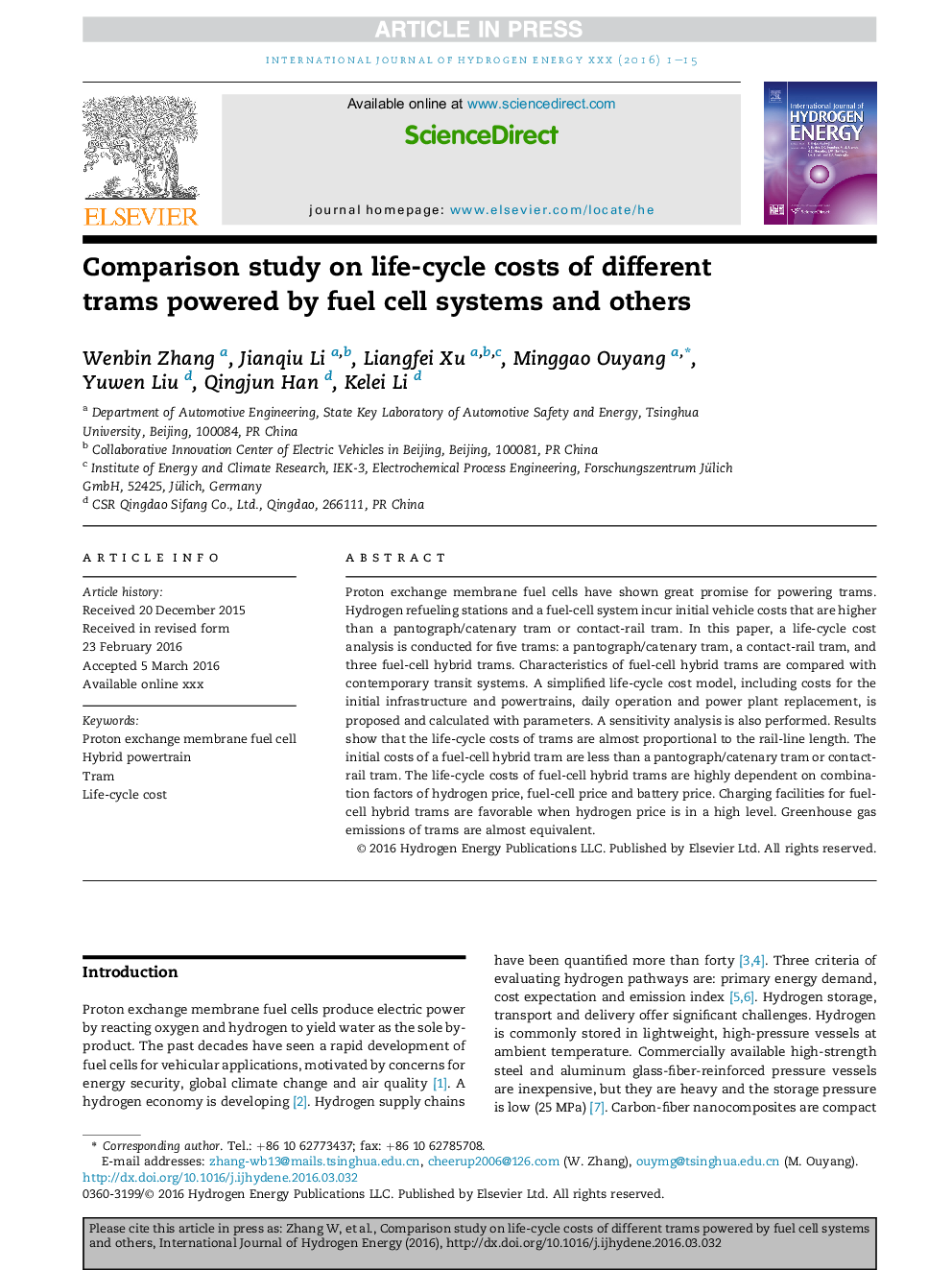| Article ID | Journal | Published Year | Pages | File Type |
|---|---|---|---|---|
| 5147669 | International Journal of Hydrogen Energy | 2016 | 15 Pages |
Abstract
Proton exchange membrane fuel cells have shown great promise for powering trams. Hydrogen refueling stations and a fuel-cell system incur initial vehicle costs that are higher than a pantograph/catenary tram or contact-rail tram. In this paper, a life-cycle cost analysis is conducted for five trams: a pantograph/catenary tram, a contact-rail tram, and three fuel-cell hybrid trams. Characteristics of fuel-cell hybrid trams are compared with contemporary transit systems. A simplified life-cycle cost model, including costs for the initial infrastructure and powertrains, daily operation and power plant replacement, is proposed and calculated with parameters. A sensitivity analysis is also performed. Results show that the life-cycle costs of trams are almost proportional to the rail-line length. The initial costs of a fuel-cell hybrid tram are less than a pantograph/catenary tram or contact-rail tram. The life-cycle costs of fuel-cell hybrid trams are highly dependent on combination factors of hydrogen price, fuel-cell price and battery price. Charging facilities for fuel-cell hybrid trams are favorable when hydrogen price is in a high level. Greenhouse gas emissions of trams are almost equivalent.
Related Topics
Physical Sciences and Engineering
Chemistry
Electrochemistry
Authors
Wenbin Zhang, Jianqiu Li, Liangfei Xu, Minggao Ouyang, Yuwen Liu, Qingjun Han, Kelei Li,
